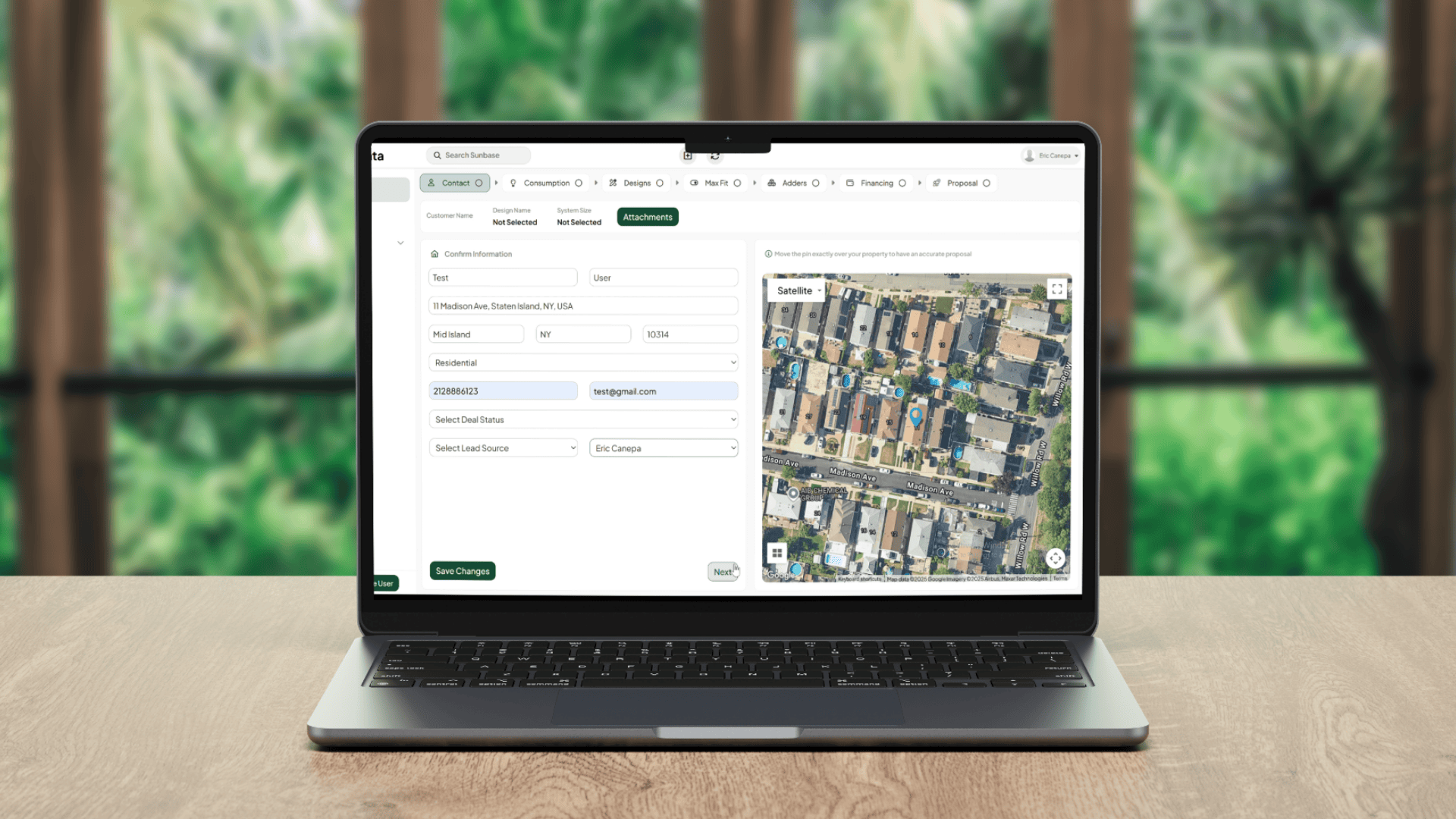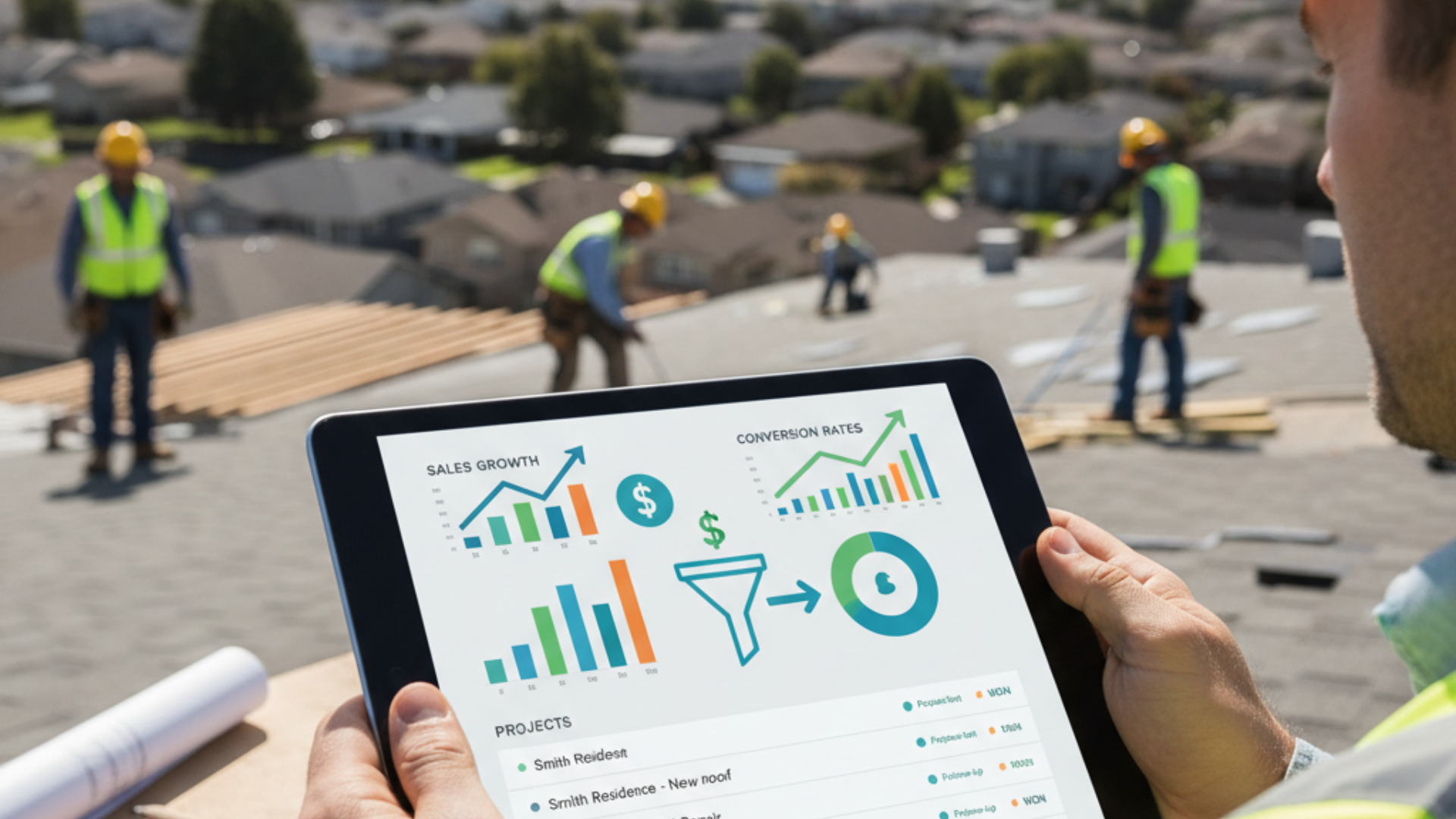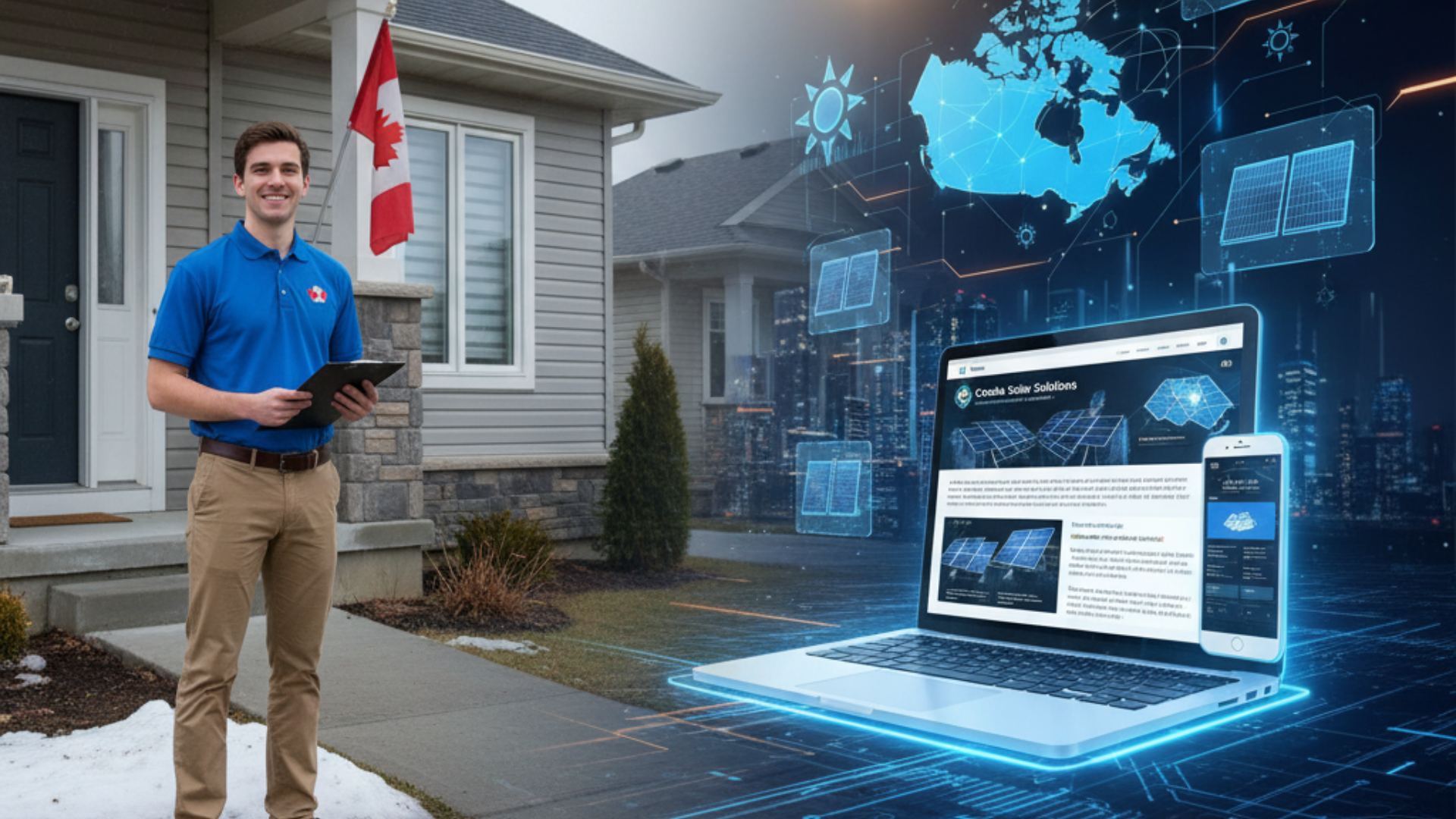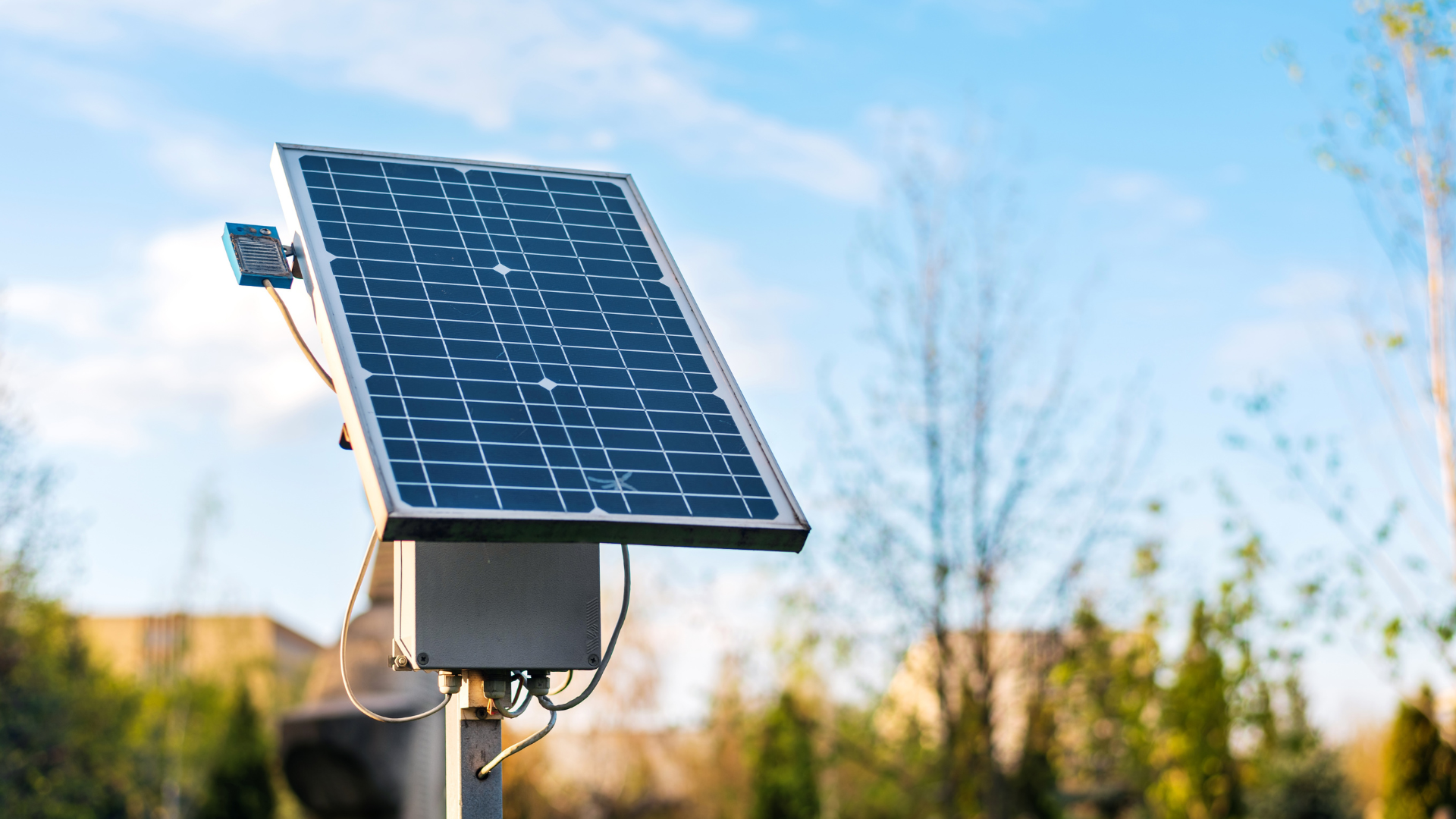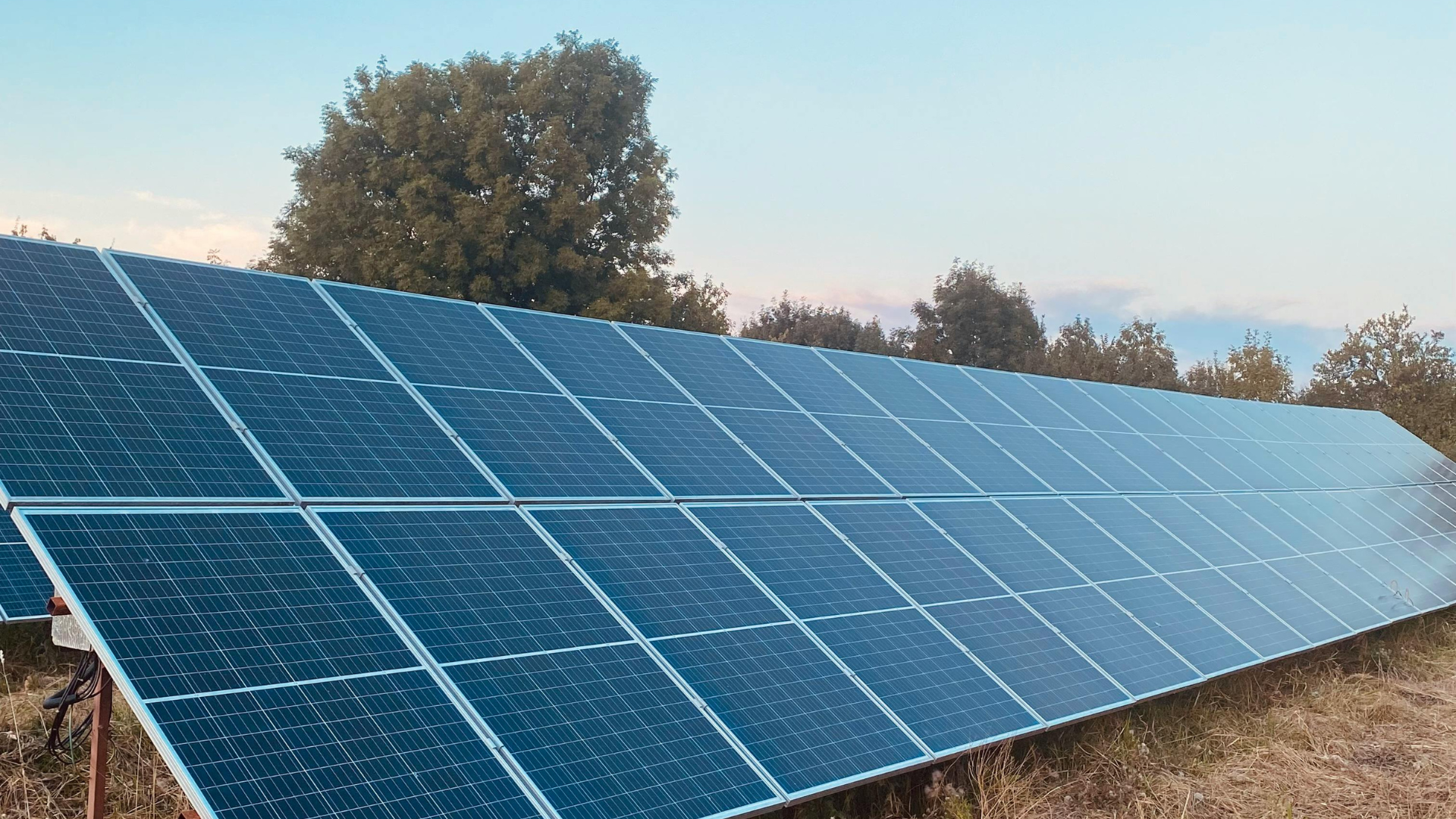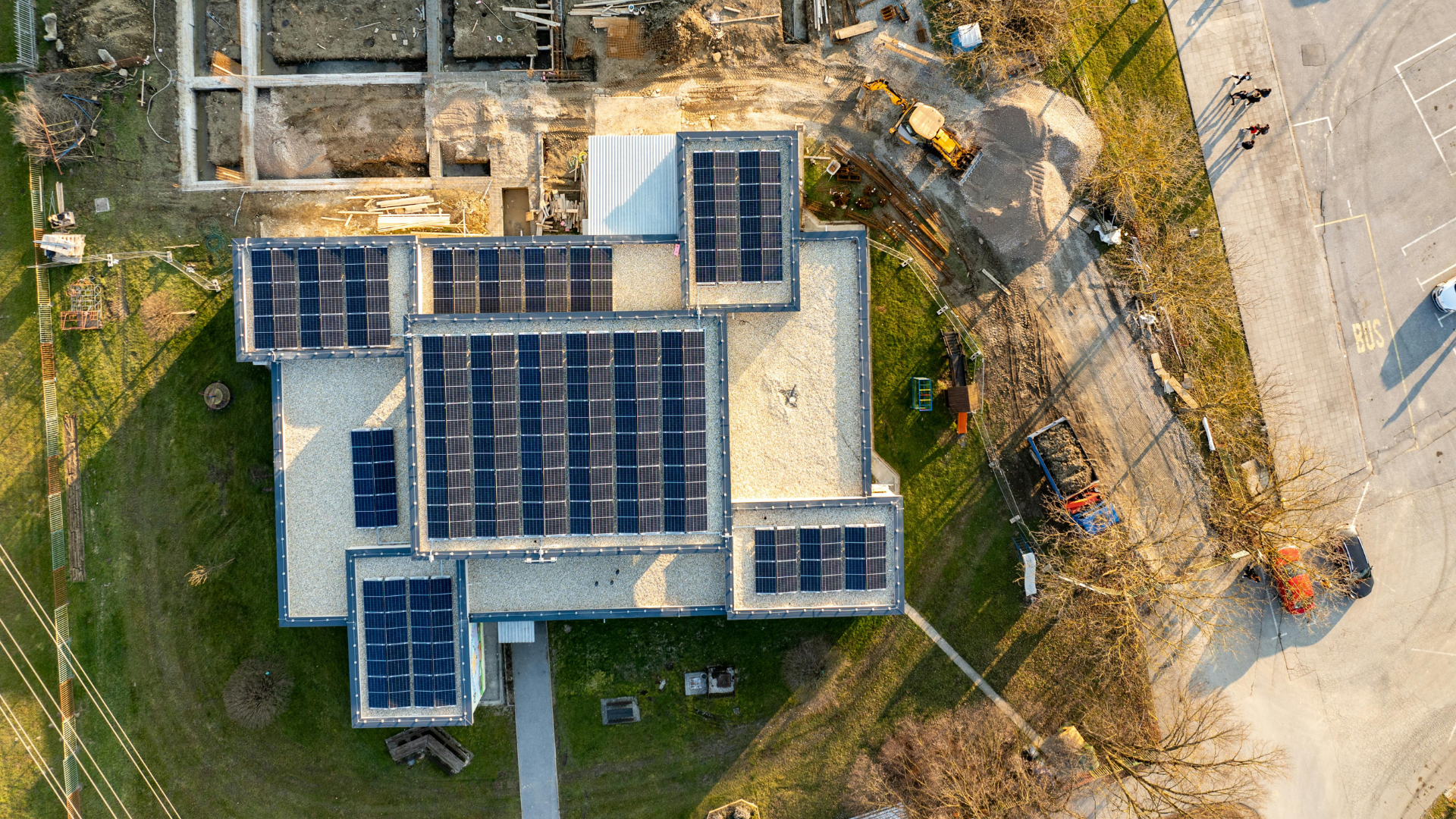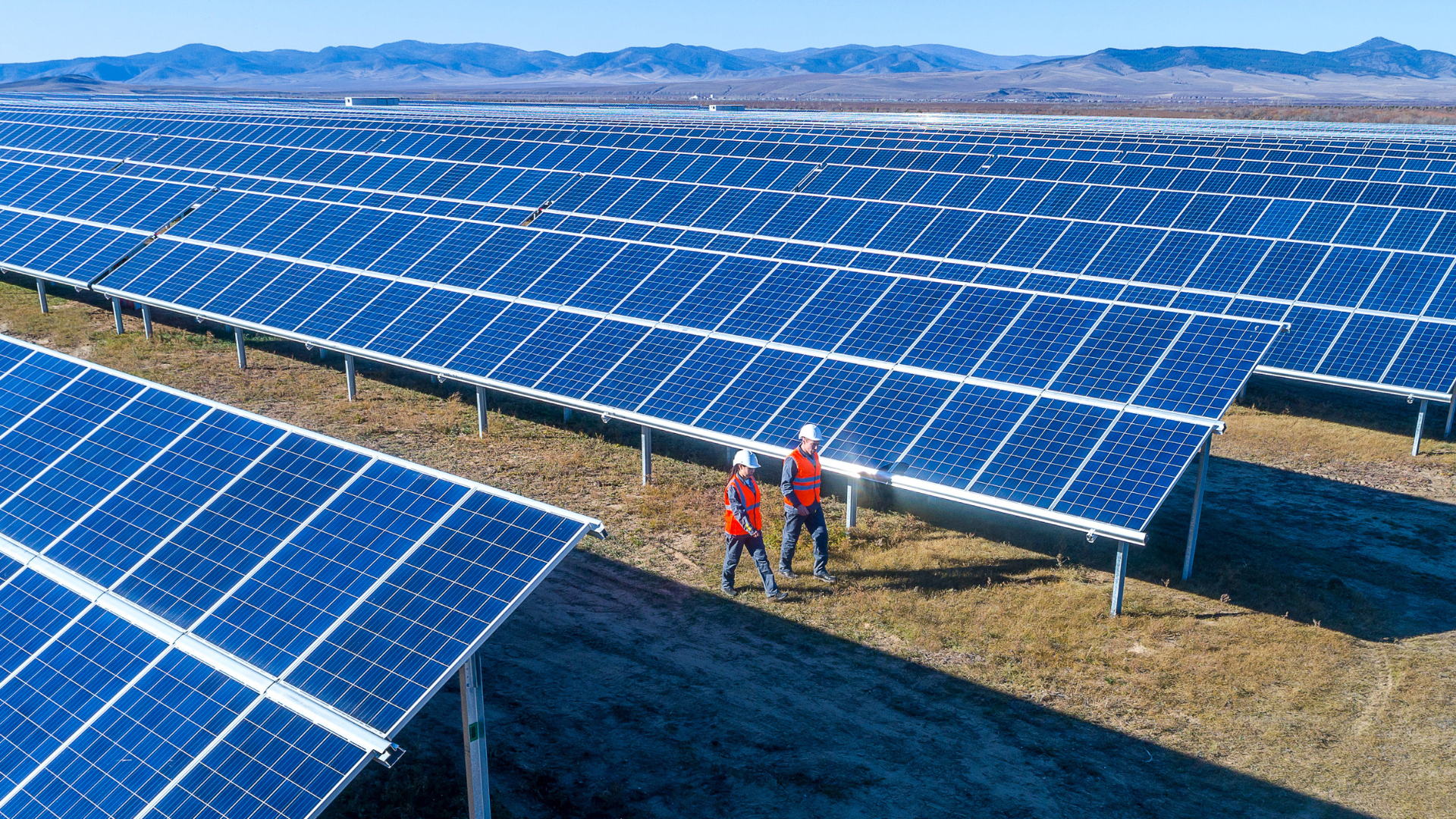July 18, 2022
Let’s be honest, writing a solar energy business proposal isn’t exactly as easy as it seems. You’d probably rather be out on-site or closing deals. But here’s the truth: a strong proposal is your golden ticket to winning projects and investors.
Think of it as your handshake in document form, professional, confident, and convincing. In this guide, we’ll break down how to write a solar proposal that doesn’t just look good but works hard for your business.
And if you want to skip the spreadsheets and formatting? A good Solar Proposal Software can help you create proposals faster and better than you can think!
Crafting the Best Solar Energy Business Proposal: A Step-by-Step Guide
Writing a solar energy business proposal doesn’t have to feel daunting. A solar energy business proposal is a structured document that outlines the system design, financial savings, installation process, permits, and long-term benefits of going solar.
To write an effective proposal, keep it client-focused: highlight utility bill analysis, system size justification, incentives, financing options, payback periods, and warranties. Use visuals like 3D models, shade reports, and production estimates to build clarity and trust.
Make the proposal easy to read, accurate, and transparent. Modern tools like Solar Proposal Software, such as Sunbase, automate design, pricing, and financial modeling so you can create professional proposals in minutes instead of hours.
Key Takeaways
- A well-structured solar proposal can make or break your deal because clarity sells.
- Focus on your client’s why: cost savings, efficiency, and reliability.
- Use visuals, data, and forecasts to build trust and show credibility.
- Automation tools like Sunbase can save hours of time spent on manual errors and rework.
- Every excellent proposal ends with a clear call to action, so make it easy to say yes.
The #1 Mistake Solar Installers Make (And How to Avoid It)
Creating generic, unprofessional proposals that kill deals before they start. But there's an easier way! Book your personalized demo and discover why leading solar companies choose Sunbase for their proposals.
What Is a Solar Energy Business Proposal?
A solar energy business proposal is a sales-ready document that explains the technical, financial, and environmental value of a solar system. It shows customers exactly what they’re getting, why it makes financial sense, and how your company will handle installation from start to finish.
A good proposal is part design report, part financial model, part trust-building document.
Standard Solar Energy Business Proposal Elements
When crafting a business plan for your solar energy company, certain elements must be included to give your investors an accurate and complete picture of your business.
While the specific details of each section will vary depending on the type and size of your company, some standard elements should be included in every solar energy business plan:
1. Company Description:
Here, you will provide an overview of your company, more like an executive summary, including its history, mission statements, and any relevant information about the products or services you offer.
The company description should be like this-
"ABC is a solar energy company that specializes in the development, financing, and construction of solar power plants. We are a vertically integrated company, meaning we handle everything from initial site selection and feasibility studies to final commissioning of the plant.
Our team has over 20 years of experience in the solar industry, and we have completed projects all over the world.
We are passionate about solar energy and its potential to transform the way we power our homes and businesses. We believe that solar should be accessible to everyone, and our goal is to make it as easy as possible for people to switch to renewable energy.
If you're interested in learning more about what we do or how we can help you transition to solar, please contact us. We would be happy to chat with you about your specific needs and see if we can help you save money and go green!"
2. Market Analysis:
Market analysis is critical when starting any business, and the solar industry is no different. There are a few key things to keep in mind when analyzing the market for a solar Energy business.
In this section, you will need to demonstrate an understanding of the solar energy market as a whole, as well as your company's place within it.
3. Government Incentives:
Government entities and incentives or regulations regarding solar energy. These can vary greatly from country to country, so it is important to do your research before entering any market.
4. Competition:
Who are the other players in the market? What are their strengths and weaknesses? How can you differentiate your business in order to gain a competitive advantage?
These are just some of the factors to consider when conducting a market analysis for a solar energy business proposal. By taking the time to do your homework, you will be in a much better position to succeed in this rapidly growing industry.
5. SWOT:
There are a number of factors that you need to take into account when carrying out SWOT analysis. These include:
- The current state of the solar energy market
- Your business's strengths and weaknesses
- The opportunities and threats that your business faces
6. Financial projections:
This is where you will outline your expected revenue, expenses, and profitability over a period of time.
Include information on how much capital you will need to get started, your financing options, how much the projected operating expenses or costs are, as well as any other financial details, even minimal maintenance charges you might pay, that are relevant to your business.
By including all of these elements in your solar energy business plan, you can give investors a comprehensive overview of your company and its potential for success, and why it is a good investment.
By taking the time to create a well-rounded and professional business proposal, you can set yourself up for success when seeking out finance for your solar energy venture.
The solar energy business is rapidly growing, and there are plenty of opportunities for those who are looking to get involved. However, as with any business, it is important to have a solid plan and understand the financials before getting started.
7. Current State:
This section will include details of your company's current status in the solar technology industry.
Here is a brief example of how it could be written-
The company I am proposing is called ABC. It is a solar energy company that will provide an innovative and sustainable solution to the world’s energy needs. The current state of the solar industry is such that there are many small, regional players who are not well known outside of their immediate area.
This prevents them from competing with the large, multinational firms that have the brand recognition and marketing budgets to reach a larger audience.
ABC will be different. We will be a global player in the solar industry, with a presence in every major market. We will have the scale and scope to compete with the big boys, while still being nimble enough to innovate and meet customer needs quickly.
The other key difference between ABC and other solar companies will be our business model. We will not just sell solar panels and systems to customers.
We will also provide a full suite of services that includes installation, maintenance, and financing. This one-stop-shop approach will make it easy for customers to go solar and will allow us to capture a larger share of the value chain.
8. Vision & Mission Statements:
These are important for any organization, yet they are often overlooked or given minimal attention.
A vision statement is a brief description of what an organization or individual hopes to achieve in the future. A mission statement is a more detailed explanation of an organization's purpose, outlining the goals and values that guide its operations.
For instance-
ABC is a company that believes in the power of solar energy. We are committed to providing our customers with affordable, sustainable energy solutions. We want to help our customers save money and reduce their carbon footprint.
We are dedicated to providing the highest quality products and services. We are constantly innovating and expanding our offerings to meet the needs of our customers. We are committed to making solar energy more accessible and easy to use for everyone.
We believe that solar energy is the future of energy production, and we are working hard to make it a reality for everyone.
9. Sales and Marketing Strategy:
Here you will outline your plans for marketing and selling your solar energy products or services. This should include a detailed sales strategy, as well as information on how you plan to create awareness and generate leads.
10. Operational Plan:
This section will provide details on the day-to-day operations of your business, including information on your manufacturing process, distribution channels, and any other relevant logistical details.
11. Management Team
In this section, you will need to introduce your management team members and provide an overview of their experience and qualifications.
Compare your current process now and know the difference: Proposal Software vs. Spreadsheets: Why Solar Companies Need to Upgrade
What Are The Elements Specific to a Solar farm?
A solar farm is a large area of land with photovoltaic panels installed, which are used to generate electricity from sunlight.
There are many factors that need to be considered when planning and developing a solar farm, such as the size and location of the site, the type of panels to be used, and the amount of electricity that needs to be generated.
1. The layout of PV Panels:
One of the most important aspects of a solar farm is the layout of the photovoltaic panels. The panels must be oriented in such a way that they can receive maximum sunlight exposure throughout the day.
The angle at which the panel is mounted also affects its efficiency; for example, a panel mounted on a south-facing slope will receive more direct sunlight than one mounted on a north-facing slope.
2. Type of PV Panels:
Another important factor to consider is the type of photovoltaic panels to be used. There are two main types of panels:
- Crystalline silicon:
Crystalline silicon panels are made of silicon crystals, while thin-film panels are made of layers of semiconductor materials such as cadmium telluride or copper indium gallium selenide.
- Thin-film:
Thin-film panels are generally less efficient than crystalline silicon panels, but they are lighter and cheaper to manufacture.
3. Size of Solar Farm:
The size of the solar farm also needs to be taken into account when planning its layout. The larger the farm, the more electricity it will be able to generate.
However, a larger farm will also require more land, which may not be available or may be too expensive.
4. Location of Solar Farm:
The location of the solar farm is also an important factor to consider. The site must have enough space for the number of panels that are needed, and it must be located in an area that receives a lot of sunlight.
The closer the solar farm is to the equator, the more direct sunlight it will receive.
5. Soil Conditions:
Another factor that needs to be considered when choosing a site for a solar farm is the soil conditions. The ground must be level and free of rocks and other debris. The soil should also have good drainage so that water does not pool on the surface and damage the panels.
6. Vegetation:
The vegetation on the site of the solar farm must also be taken into account. Tall trees and other obstacles can shade the panels, reducing their efficiency.
The vegetation should also be low-growing to avoid impeding the movement of workers or equipment.
7. Wind Conditions:
Wind conditions at the solar farm site must also be considered. High winds can damage the panels or blow debris onto them, reducing their efficiency. The best sites for a solar farm are those that have little to no wind.
As you can see, many factors need to be considered when planning and developing a solar farm. By taking all these factors into account, you can ensure your solar farm is designed and built to generate the maximum possible electricity.
Single-use or Live Business Plan
A business proposal is a written document that offers a particular product or service to a potential buyer or client. It is usually solicited, meaning that the prospective customer has asked for it. A good business proposal must be clear, concise, and persuasive.
There are two types of business proposals:
1. Single-Use:
A single-use proposal is used once and then discarded. It is created specifically for one client and one project only.
2. Live:
A live proposal, on the other hand, can be reused many times. It contains generic information about your company and its products or services.
Although having a live Business plan is always the more reasonable choice, as it saves time and money and is more efficient due to the available tools. If you're thinking of starting a solar energy company, you'll need to write a business proposal to secure funding from investors.
However, it is also important to have a strong solar template for effective marketing of your solar business.
Tips for writing a Solar Energy Business Proposal
When writing a solar energy business proposal, there are a few key things that you should keep in mind:
The purpose of your proposal
- Who is your target audience is
- What needs to be included in your proposal
Let's take a closer look at each of these points.
1. Purpose of Proposal:
First and foremost, you need to have a clear understanding of the purpose of your proposal.
- Are you trying to secure funding from investors?
- Or are you trying to win over a new client?
Once you know the purpose of your proposal, you can start tailoring it to your audience.
2. Focus on Financials - Investors
If you're writing a solar energy business proposal for investors, focus on the financials.
- What is the start-up cost of your business?
- How much revenue will you generate with your solar energy systems in the first year?
- What are the risks and potential rewards of investing in your company?
3. Focus on Product and Services - Potential Customer
On the other hand, if you're writing a proposal for a potential customer, focus on how your product or service will benefit them.
- What needs does your product or service address?
- How will it save them time or money?
- Why should they choose you over the competition?
Here are some valuable tips for Overcoming Homeowner Hesitation with Data-Driven Solar Proposals!
How to put together a Good Solar Proposal?
Once you know who your audience is and what needs to be included in your proposal, you can start putting together a document that is clear, concise, and persuasive. Here are a few tips to keep in mind:
1. Charts and Graphs:
Include numbers and data to support your claims. Use charts, graphs, and tables to make your case.
2. Visual Aids:
Make sure your proposal is visually appealing. Use high-quality images and graphics to break up the text and add visual interest.
3. Proofread:
Proofread your proposal carefully before sending it out. There's nothing that will turn off a potential investor or customer more than typos and grammatical errors.
By following these tips, you can ensure your solar energy business proposal is clear, reliable, concise, and persuasive.
Also read How to Make a Winning Solar Proposal in Under 10 Minutes (Yes, you read that right! In just 10 minutes)
How Sunbase Solar Proposal Software Can Help You Succeed?
Sunbase solar proposal software reduces the sales cycle. It increases conversion rates by providing quicker turnaround times, accurate ROI estimates, and a polished, professional appearance that fosters customer trust and confidence.
With Sunbase, you can:
- Generate complete proposals in minutes
- Auto-calculate ROI, payback period & incentives
- Create interactive, client-friendly proposals
- Build branded templates for teams
- Reduce manual errors and close deals faster
Additionally, our solar industry-specific tools make tasks much easier, such as determining utility consumption offsets, analyzing installation sites, and even closing the sale.
Best part? Whether you’re a one-person solar operation or a multi-state EPC, Sunbase gives you the tools to pitch confidently and win more bids.
Conclusion
Although solar electricity is a relatively new technology, it is becoming increasingly popular as people become more aware of the benefits of renewable energy sources.
A solar proposal isn’t just a document; it’s your story, strategy, and sales pitch all rolled into one.
So, if you’re ready to save time, boost conversions, and finally enjoy proposal writing (yes, it’s possible), give Sunbase Solar Proposal Software a try. It’s fast, accurate, and designed for solar pros who’d rather focus on growth than formatting PDFs.
It's Time to Level Up Your Proposal Game with Sunbase
Everything in this guide is Sunbase's bread and butter. You now have the knowledge. Add the tool that 8,000+ solar professionals trust to close more deals.
Just schedule your demo and claim 10+ hours back every week!
FAQ's
What should a solar energy business proposal include?
A strong solar proposal includes system design, energy offset, equipment details, financial savings, incentives, installation timeline, and warranties.
How long should a solar proposal be?
Most winning proposals are 8–15 pages, long enough to be clear, short enough to stay readable.
Do I need Solar Proposal Software to write proposals?
You can create proposals manually, but software like Sunbase speeds up the process, removes errors, and improves presentation quality.
How do I calculate solar savings in a proposal?
Savings are calculated using utility rates, energy consumption, system production estimates, incentives, and financing terms.
Can I reuse the same proposal template for multiple clients?
Yes — as long as key elements (energy usage, system design, pricing) are customized. Tools like Sunbase allow reusable templates with automated personalization.
One Platform. Zero Chaos. Run Your Entire Business in One Place.
Sunbase replaces your CRM, proposals, scheduling, job tracking, and reporting tools — all inside one clean, connected platform.
About Sunbase
The All-In-One Platform to Run Your Entire Business
Sunbase helps you organize operations, streamline daily workflows, and manage everything - from first customer contact to final project deliver- in one connected system.
Our Mission
- Organize your business.
- Optimize your workflow.
- Automate what slows you down.
Why Businesses Choose Sunbase
One Connected Workflow
Replace scattered tools and manual processes with a single platform that brings together your team, tasks, customers, jobs, and performance data.
🌎 Global Presence
Serving the United States, Canada, India, LATAM, Australia, and 10+ international markets.
👥 11,000+ Users
Trusted by contractors, installers, project managers, sales teams, and field technicians.
🏗️ Built for All Sizes
From small contracting teams to fast-growing enterprises, Sunbase adapts to your workflow.
Useful Links For You
Stop Managing Your Business Manually. Automate It.
Sunbase automates workflows, reduces mistakes, and helps your team get more done - without hiring extra staff or juggling multiple tools.



